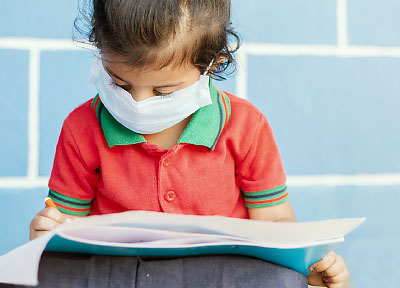Children Getting Fewer MH Services During Pandemic, CMS Reports
Abstract
Preliminary Medicaid and CHIP data show that there were 6.9 million fewer outpatient mental health services earlier this year compared with last year, even after accounting for an increase in telehealth visits.

Millions of children and adolescents aged 18 and younger from low-income families did not receive mental health care or other health care services in the first few months of the COVID-19 pandemic, according to preliminary data from the Centers for Medicare and Medicaid Services (CMS).
From March to May of this year, there were 6.9 million, or 44%, fewer outpatient mental health services received by children covered by Medicaid or the Children’s Health Insurance Program (CHIP) compared with the same period last year.
“This decline may have significant impacts on long-term health outcomes for children, as Medicaid and CHIP cover nearly 40 million children, including three-quarters of children living in poverty and many with special health care needs that require health services,” a CMS news release stated. “CMS is releasing [these] preliminary data to raise awareness of the vital services Medicaid and CHIP provide and calling on stakeholders to take action to make services more readily available so that we can begin closing the gap in care for children.”
The data, which are based on preliminary claims information, show a steep decrease in outpatient mental health services among children covered by Medicaid or CHIP starting around this past February compared with last year. Outpatient mental health services dropped from nearly 138 services per 1,000 beneficiaries in January to about 58 services per 1,000 beneficiaries in May, including telehealth visits, CMS reported. Starting in mid-February, telehealth visits began to increase for mental health services, but not enough to offset the decline in services.
The data show that patients are not receiving the care they need, and the consequences could be huge. “My concern is that we’re going to see an increase in suicide attempts and general lack of well-being among our children, who need us very much right now,” said Bob Batterson, M.D., a member of APA’s Council on Healthcare Systems and Financing, past speaker of the Assembly, and section chief of child and adolescent psychiatry at Children’s Mercy Hospital in Kansas City, Mo.

Youth are missing out on a lot by not going to school, such as how to engage with peers and make friends, which are vital to a child’s development, says Michelle Durham, M.D., M.P.H.
Considering all the challenges that families are experiencing during the pandemic, Michelle Durham, M.D., M.P.H., said that she is not surprised that children are not receiving mental health care. Durham is an assistant professor of psychiatry and psychiatry residency training director at Boston University School of Medicine.
Even families who have all the supports and resources they need are having a hard time during the pandemic, particularly while schooling is virtual, Durham said. Families of low socioeconomic status might be struggling with the same issues on top of dealing with food or housing insecurity, and some parents may be working multiple jobs. Also, families who rely on Medicaid and CHIP may not have access to the private space, broadband connection, or videoconferencing equipment necessary for a telepsychiatry appointment, Durham explained.
“With competing demands to make ends meet, making sure their kids are seeing their mental health provider can be challenging,” Durham continued. “These children are also more likely to live in multigenerational homes, and COVID-19 may have impacted one of their family members.”
Since so many clinicians have transitioned their practices to telehealth, many have reported an increase in visits, fewer no-shows, and an overall positive experience, Batterson pointed out. “When you then see that people who are underserved aren’t able to receive services, it shows a widening gap between those who can access services and those who struggle to do so,” he said.
The CMS data suggest that a stronger effort is needed to ensure children are connected with services, Batterson said. That could mean having crisis intervention teams going into the community for in-home visits or providing in-person services again, while following CDC safety protocols. “Mental health care just needs to be seen as a priority,” he said.
Before the pandemic, many children had limited access to mental health services, Durham pointed out. But at least school systems could act as a safety net for some children who were seriously struggling. Now, children who may have been making progress before the pandemic have lost additional school supports, likely bringing them a few steps backward.
“Although we don’t know the full extent of the social, emotional, psychological, and educational toll the pandemic will have, we know that, at a bare minimum, not going to school every day will absolutely impact kids,” Durham said. ■
The CMS data are posted here.



